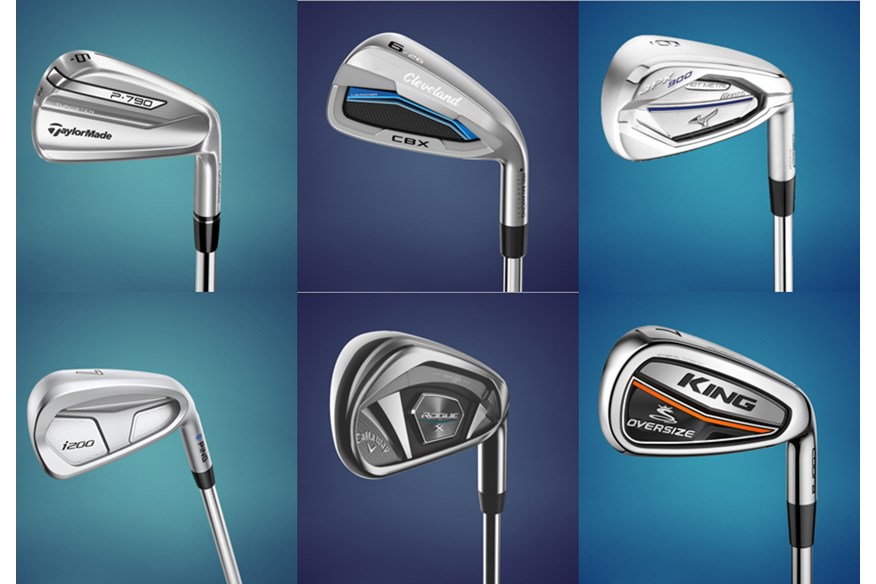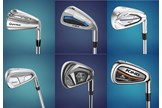Best Irons 2018
Last updated:
Best Irons 2018: We bring you the best irons of 2018 – tried and tested as part of our biggest ever golf club equipment guide, Top Gear. For our 2017 test, click here.
In our biggest ever equipment test we reviewed hundreds of golf clubs, and when it came to selecting the best irons of 2018, the only way we thought we could fairly do it was by splitting it in to three different categories: Better Player (jump to), Game Improvement (jump to) and Super Game Improvement (jump to).
Don’t know which kind of irons you should be looking for to suit your game? Our equipment editor breaks down the types of irons you should choose here
Top 10: Better Player Irons 2018
For those blessed with a good degree of ball-striking, better player irons tend to feel softer, sound crisper and give more feedback than Game-Improvement and Super-Game-Improvement irons.
Generally they have smaller heads, with less offset, narrower soles and top edges. If there’s a cavity back it’s smaller and because of the head’s reduced size, weight positioned around the perimeter is closer to the centre of gravity. That makes them easier to shape (meaning bad shots go further offline, too), but also naturally less forgiving. So which made our top 10 of 2018?
Ping i200 Irons – £120 (s) £130 (g) per club
| Website | www.ping.com |
| Availability | 3 – UW |
| Shaft | Choose from 7 premium options |
| 7iron loft & lie | 33° loft / 37” length |
| Forgiveness rating | 2.5 |
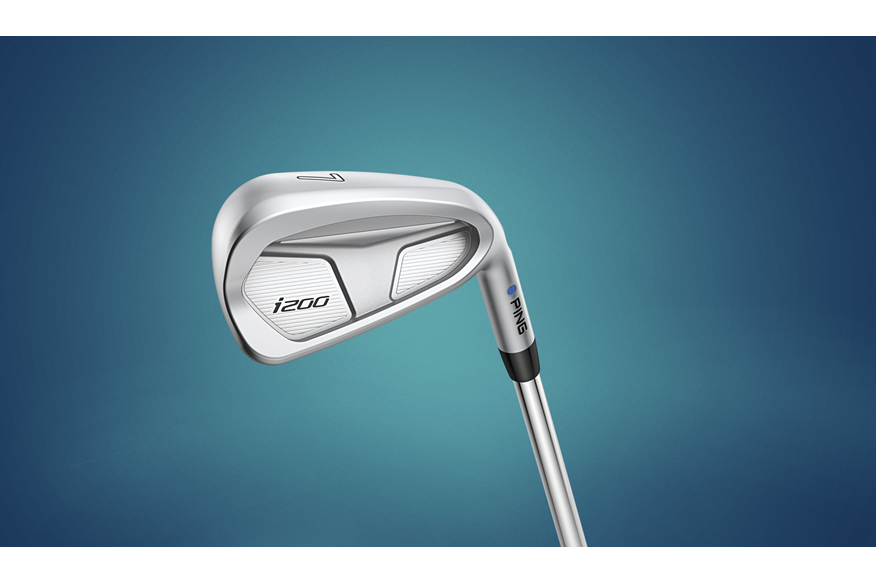
You need to know:
The i200 replaced the “i” iron, and brings some notable updates to the table. The face is 30% thinner, which means more mass is positioned in the toe and heel to nudge MOI 7% higher. A higher leading edge and extra bounce improves turf interaction and means less lost energy at impact. Extra elastomer behind the face dampens vibration to give a blade like feel but from a cavity back.
We say:
Speak to any designer of better player irons and they’ll tell you how good players want forgiveness from their irons. They’ll also make it clear forgiveness can’t come at any cost. So a designers first priority is producing a good looking head. Or Better players simply won’t entertain putting them in play. Secondly they focus on forgiveness. And that’s where the i200 comes into its own. Yes some will accuse it of being a bit boxy (like our test pro) but it’s a look Ping have made their own. And it’s the clubs ability to marry good looks with decent levels of playability which makes it an outstanding choice for reasonably-decent club golfers. We loved the sleek hydropearl finish, it looks great in the bag and because our 11-handicap amateur would love a set in his bag, it proves just how wide an audience the i200 appeals to.
Verdict:
Our test pro’s numbers with the i200 were just below average for ball speed and carry distance, which in part at least is down to a higher seven iron loft than our test average. It’s everything you wouldn’t really expect in a better player iron, we reckon they’re a fantastic all-rounder, which means they won’t put undue pressure on your ball-striking.
Mizuno MP-18 SC Irons – £135 per club
| Website | golf.mizunoeurope.com |
| Availability | 3 – PW |
| Shaft | Choice of 16 premium options |
| 7 Iron loft & lie | 34° loft / 36.75” length |
| Forgiveness Rating | 2 |
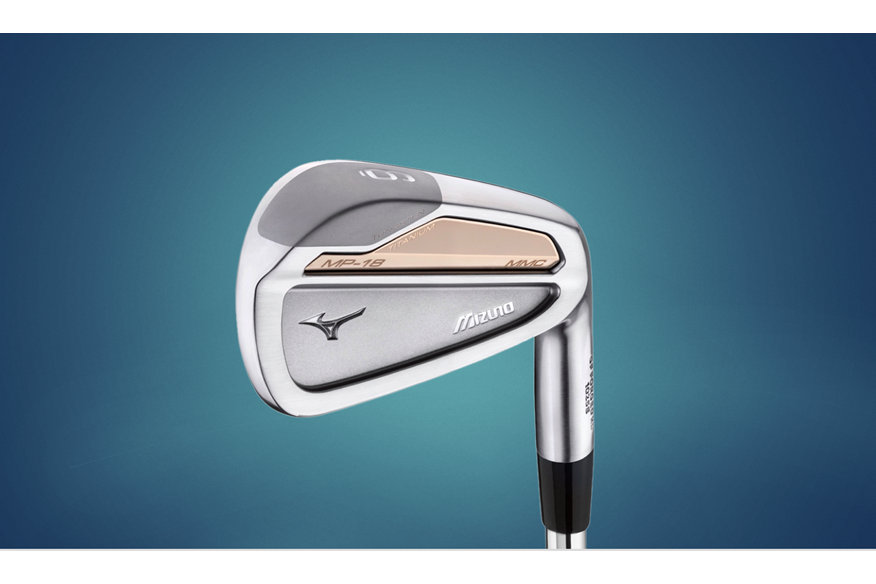
You need to know:
A compact cavity back, which sits seamlessly alongside the MP-18 muscleback. A slightly wider cambered sole is more playable than the MB, yet the SC thanks to a thin tapered top line, short head length and compact wedges are very much a tour ready iron. As you’d expect grain flow forged for outstanding shot feel and feedback.
We say:
Our test pro is a huge fan of smaller headed irons, which is why the MP-18 SC were right up his street. A 34deg seven iron loft (which is 2deg more than the test average) was never going to compete when it came to raw distance. But golfers looking at buying the SC’s are much more likely to be focused on looks, feel and feedback which the SC’s score very highly on. Our test pro reckoned he hit a few shots low in the face yet still got great results, which has to say the SC has a degree of playability. As you’d expect from a forged Mizuno iron feel and sound is excellent.
Verdict:
It’s interesting more tour players have plumped for Mizuno’s JPX 900 Tour iron than the MP-18 SC. We reckon it’s highly likely to be down to them having different finishes, but if you’re into classic forged cavities MP-18 SC are a traditionalists dream. Our test pro reckons with a forgiveness rating of two, you need to have a low single figure handicap or be a very good ball striker to get the best out of them.
TaylorMade P790 Irons – £1049 (s) £1299 (g)
| Website | www.taylormadegolf.com |
| Availability | 3 -PW |
| Shaft | True Temper Dynamic Gold 105 (s) UST Recoil 760/780 (g) |
| 7iron loft & lie | 30.5° loft / 36.75” length |
| Forgiveness Rating | 2.5 |

You need to know:
With the looks of a blade and playability of a cavity back the P790s are a potent mix. A forged face delivers great feel, while speed foam in the internal cavity (mid and long irons) supports the face and optimises sound. Thanks to the forged two-piece construction and speed pocket sole the lower face is completely unsupported, which TaylorMade say maximises face flex and rebound where golfers misses are most common.
We say:
One of the most talked about irons since they launched last August, the P790’s have put the proverbial cat amongst the pigeons for reasonable golfers looking for a new set of irons. With the looks of a blade, but playability of a cavity back the P790’s are a potent cocktail. Our test pro liked the lively slighter lighter feel, which in part is down to the Dynamic Gold 105 being 22g – 25g lighter than a traditional Dynamic Gold shaft. With a ball speed average of 124mph the P790 was tied (with Titleist AP3 and Callaway Rogue Pro) for the fastest on test (better player iron category). Unlike our Crossover irons test last year (where the P790 produced the longer carry distance) the P790 didn’t quite out shine the TitleistAP3 for overall carry distance (184 yards vs 179 yards) but our data does prove how closely the two are matched.
Verdict:
We’ve heard a good number of TG readers have made the difficult choice between the P790 and Titleist AP3. Both have hollow bodies, both are fast and long so if you need help deciding between the pair, we recommend hitting them both. If you still can’t make up your mind, look at the set make-up you need, P790’s come as a set whilst the AP3’s are sold individually.
Mizuno MP-18 MMC Irons – £150 per club
| Website | golf.mizunoeurope.com |
| Availability | 3 – PW, GW |
| Shaft | Choice of 16 premium options |
| 7iron loft & lie | 32° loft / 36.75” length |
| Forgiveness Rating | 2.5 |

You need to know:
It’s taken Mizuno’s craftsmen three years to work out how to make the multi-material MMC. 20g of tungsten in the toe raises playability and forgiveness, and extra mass is removed from the cavity thanks to a titanium badge which improves forgiveness in this tour ready profile. Mizuno reckon the MMC offers similar levels of forgiveness to Pings cavity backed Eye 2 iron from years ago which is seriously impressive from such an attractive, alluring head.
We say:
Never did we think an iron with the looks of the beautiful MMC could Mizuno offer similar levels of forgiveness as the deep cavity back Ping Eye 2 iron from the 80’s. The MMC is a feat of engineering, from a loft 1.5deg weaker than the strongest on test it was able to post ball speeds just 3 mph down on the fastest and a carry distance 3 yards short of the second longest iron on test. Make no bones about it the MMC’s sole width is still narrow, so we reckon you need to be a decent ball striker to get the best out of them. A massive draw of any Mizuno iron is the huge choice of premium shaft and grip options, all of which are included within the RRP. And of course the ability to buy irons individually so you only pay for what you need.
Verdict:
A cracking iron that blurs the line between better player irons and a game improvement model, a definite rise in playability over MP-18 SC means we reckon you can look at its levels of forgiveness along similar lines to the TaylorMade P790 and Titleist AP3. A brilliant option for improving golfers up to a 10 or 12 handicap.
Titleist 718 AP3 Irons – £150 (s) £175 (g) per club
| Website | www.titleist.co.uk |
| Availability | 3 –PW, AW |
| Shaft | True Temper AMT Black |
| 7iron loft & lie | 31 deg / 37 deg |
| Forgiveness Rating | 2.5 |
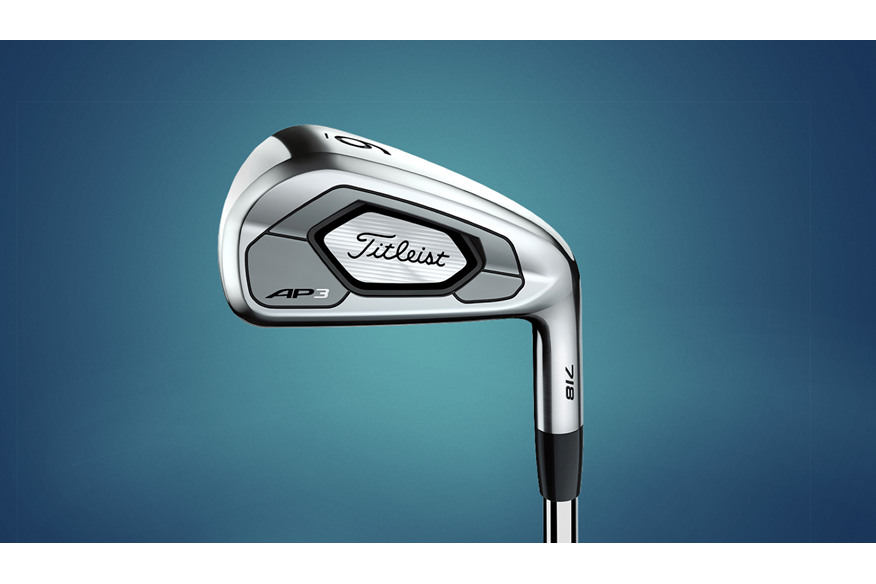
You need to know:
Titleist say the AP3 represents the best of both worlds, it combines everything they’ve learnt over the years from creating their AP1 and AP2s to create their longest, fastest ever players distance iron. A hollow body head means you get a player preferred shape but combined with the off centre hit performance of a game improvement iron. Precise when you pure it and forgiving when you don’t say Titleist.
We say:
A real feel good club, and for us probably Titleist’s best and most desirable iron for some time. Ball speeds from the hollow body head were right at the top of the pile (124mph tied with the TaylorMade P790 and Callaway Rogue Pro). Speed’s not the only area the AP3 excelled at either it launched shots over a degree higher and flighted shots 3 yards above our test average, it also carried shots 5 yards further than the next best iron (TaylorMade P790). So all in a very strong across the board performance, and when you throw in how you’re highly likely to improve your dispersion consistency by pulling less club for approaches into a green, it’s a real winner.
Verdict:
We can see golfers flocking to the AP3 and TaylorMade P790’s because they offer golfers a club they’ve been wanting for years. It’s a simple recipe but not an easy one to pull off, teaming the looks of a better player iron with game improvement forgiveness. Or as our test pro put it, AP3s got the look of a 2 on our forgiveness scale, but it plays like irons with a rating of 3.
Callaway X Forged Irons – £1049
| Website | www.callawaygolf.com |
| Availability | 3 – PW |
| Shaft | Project X (s) |
| 7iron lie & loft | 33deg / 37” |
| Forgiveness Rating | 2 |
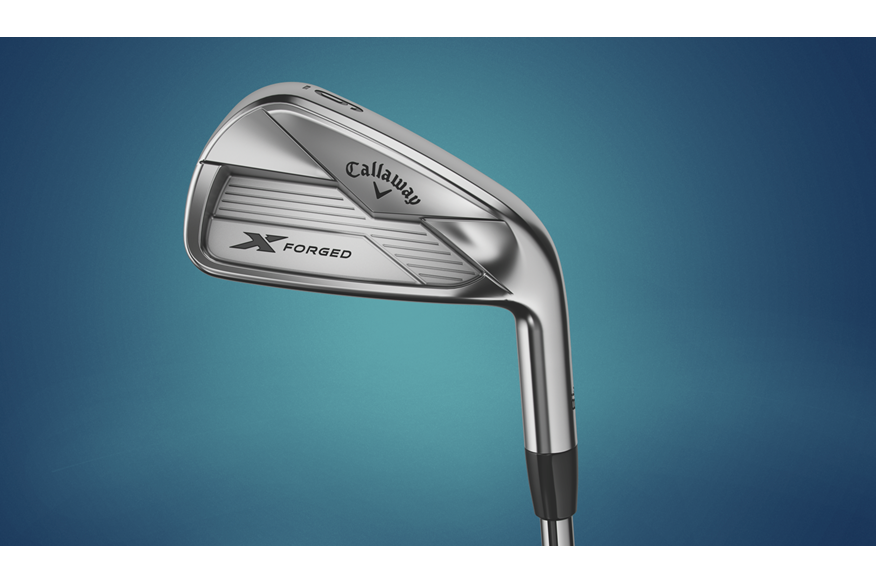
You need to know:
Designed with extensive input from Callaway’s tour staff, the X Forged incorporate a small cavity back for an extra degree of playability over Callaway’s Apex MBs. Tour configured soles improve turf interaction, and clean smooth lines give an appealing look at address. 20V grooves maximise spin consistency for controlled shot-making.
We say:
If there were awards for looks alone the X-Forged would surely win hands down, it’s a stunningly well shaped iron and the classic finish is out of this world. Decent golfers will love the straight and square leading edge, which our test pro reckoned would be great for alignment and help with shot-shaping. With absolutely no fast face tech and a seven iron loft 2.5 deg weaker than the strongest on test, the Forged was never going to compete on numbers, but then it was never designed to. Rather their strength lies in tugging at heart strings, golfers who play them will do so because they’re forged, because they feel and look great not because they promise improvements in speed, launch or carry distance.
Verdict:
This is the furthest you need to go down the Callaway iron range, leave the Apex MB alone unless you’re name is Sergio Garcia. Much like a super-model you can bet your bottom dollar they’ll look the business in your bag but they’re likely to be a devil to live with, that is unless your ball-striking ability’s equivalent to a very low single figure ability or better.
Srixon Z 765 Irons – £770
| Website | www.srixon.co.uk |
| Availability | 3-SW (stock set 4 – PW) |
| Shaft | Nippon NS Pro Modus3 Tour 120 (s) |
| 7 iron loft & lie | 32 deg / 37” |
| Forgiveness Rating | 2 |
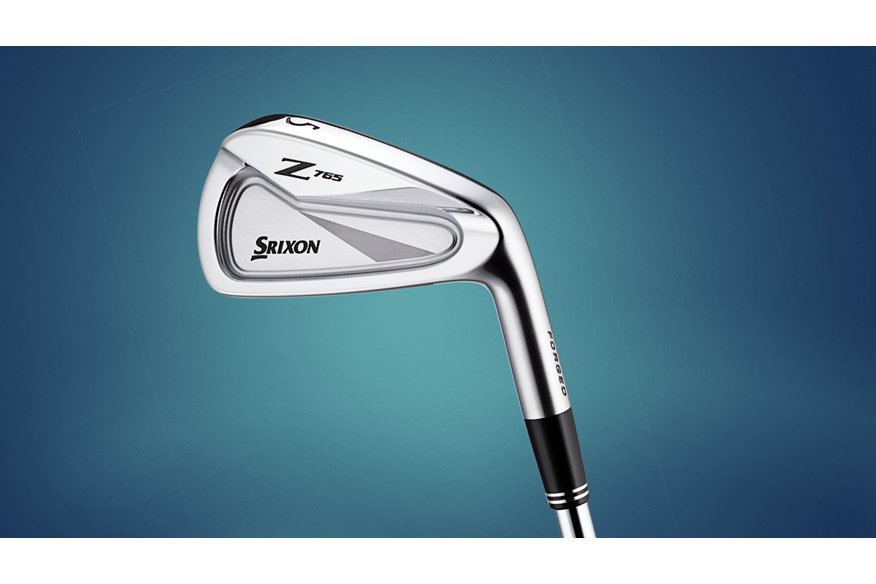
You need to know:
A muscle cavity which blends a players profile with the forgiveness of a cavity back. The 1020 carbon steel heads are heat treated to deliver the smoothest forged feel. Srixon’s engineers insist the Tour V.T Sole is more efficient through the turf, reducing impact resistance and tightening shot dispersion. 5% larger grooves and double laser milling improves spin control and performance in wet conditions.
We say:
We’ve known for years at TG that Srixon make great golf balls but its only over the last few that we’ve gained a real respect for the brands forged irons. Simply put they’re fantastic, and our test pro reckoned the Z765’s were amongst his favourite and he’d happily slip them in his bag for 2018. Last years Top Gear 2017 showed how powerful the Z765s are and even from a weaker loft they showed their muscle again in 2018. A ball speed 1mph slower than the fastest on test (which have much more fast face tech), but the ability to launch and flight shots fractionally higher than any other better player model on test and still maintain a carry distance just 1 yard down on the second longest iron tested is seriously impressive. Hats off to Srixon for producing such a brilliant iron, if you’re open minded about brands they’re well worth testing against your favourites before taking the plunge.
Verdict:
If you’re interested in a set of 765’s you need to be quick about it, as it’s highly likely they’ll be replaced towards the end of the summer. The Japanese love to pour over every detail and it’s these tiny additions that make these irons stand out. Laser face milling, a beautiful satin and polished finish, the sole detailing, a new heat treatment to improve feel and grooves that are just a tiny bit bigger. Everything adds up to a first-class overall design.
Wilson Staff C300 Forged Irons – from £599 (s) £699 (g)
| Website | www.wilson.com |
| Availability | 3 – PW, GW |
| Shaft | KBS Tour 105 (s) Fujikura Pro 85 (g) |
| 7 iron loft & lie | 33deg / 37.25″ |
| Forgiveness Rating | 2.5 |
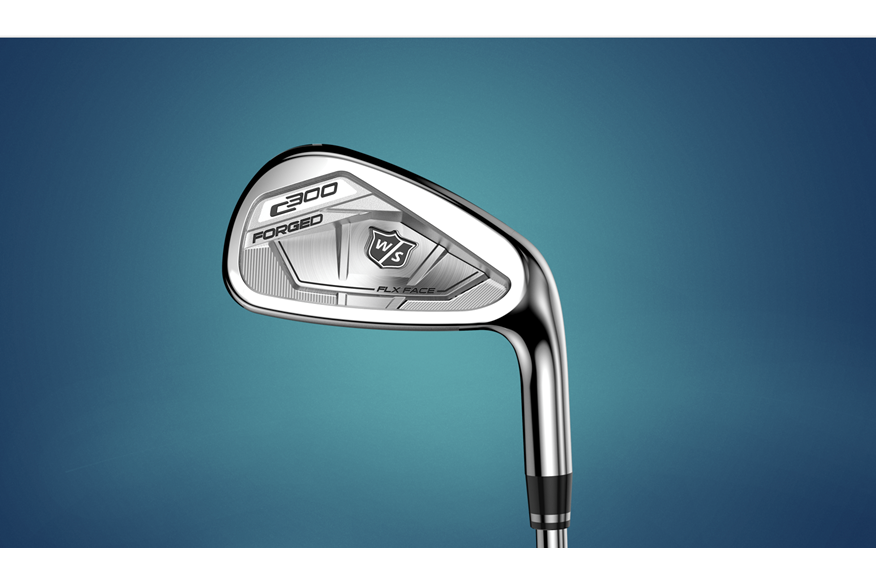
You need to know:
Wilson say the C300 Forged is the first to incorporate power hole technology in an 8620 carbon steel iron head. It means you get the same feel as Wilson’s excellent tour level FG Tour V6, but with extra ball speed and additional playability. Five power holes in a double row on the sole increase face flex.
We say:
Right on the fence between a better player and game improvement iron, the C300 could easily slip into either category. The C300 Forged came about, because golfers loved the look and feel of Wilson’s FG Tour V6 (which Padraig Harrington plays) but felt a bit intimidated by the tiny head size. Wilson’s next step up the ladder were the cast C200s, which were miles away from everything golfers loved about the V6. Simon was the C300s biggest fan, loving how Wilson’s engineers have combined so much tech within a forged head. We’ve tested the C300s twice now, on both occasions it’s not ripped up any trees in terms of ball speed or carry distance, but we still love its marriage of forged head with oodles of tech.
Verdict:
Compared to other players distance irons, the C300 is the only one that can boast of a full forged head, both the P790 (forged faces only) and AP3 (not forged) can’t. Compared to the Wilson FG Tour V6, C300 was four yards longer through the air, which we reckon makes it attractive to anyone who loved the V6 but hankered after extra ball speed protection and forgiveness. A decent shout for golfers looking for an excellent but sensibly priced crossover (irons that sit between better player and game improvement categories) iron.
Wilson Staff FG Tour V6 Irons – £699
| Website | www.wilson.com |
| Availability | 3 – PW (4 – PW) |
| Shaft | True Temper Dynamic Gold AMT |
| 7iron loft & lie | 35° / 37.25” |
| Forgiveness Rating | 2 |
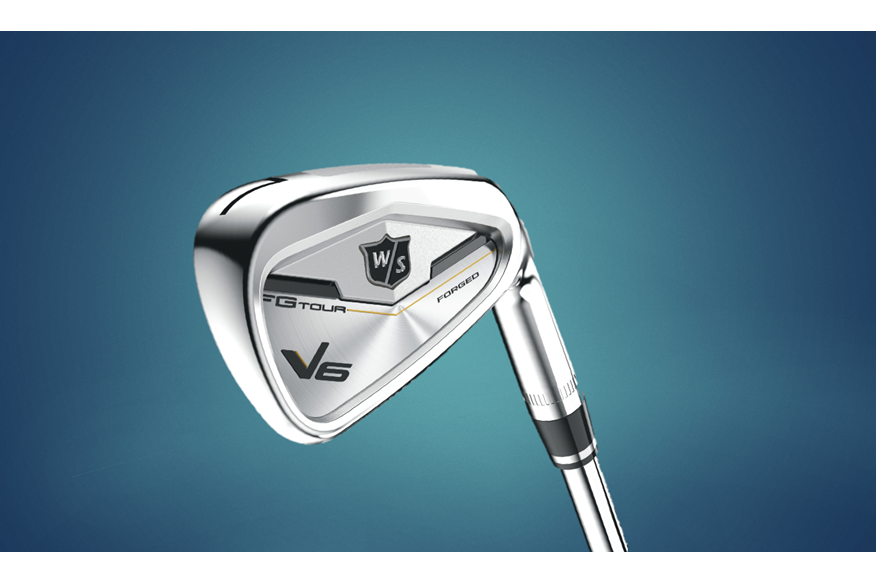
You need to know:
20g of tungsten weighting in the 3 – 7 iron lowers the centre of gravity and increases launch angle without increasing spin say Wilson. Which means a higher peak height in the long and mid irons and a steeper descent angle for attacking the pin. Each head is forged from 8620 carbon steel for what Wilson call the ultimate in feel, feedback and response.
We say:
Wilson know a thing or two about designing irons as theirs have been used to win more major championships than any other brand. The V6 throws up a real conundrum though, as its head size is one of the smallest on test. It’s natural to expect a smaller head to be less forgiving but with one of the largest and deepest cavity backs in the category and plenty of tungsten toe and heel weighting to boot we wondered if the V6 could make up for its lack of size by turning in a strong performance. After plenty of hitting and discussion we reckon it can. Wilson’s engineers have rinsed every last bit of forgiveness out of such a streamlined head, thanks mainly to the tungsten weighting and cavity size. At the end of the day the V6 are a lot of product for the price, which sounds ridiculous as they’re nearly £700, but the best forged competition will set you back more.
Verdict:
Wilson can’t claim anything like the tour presence they used to, as there’s other brands out there nowadays spending megabucks on tour players and marketing to convince you their products are better. But if you can take a step back and look at the V6’s objectively in the cold light of day, they’re a really decent set of forged irons, with just enough tech to aid, not punish a decent players enjoyment of the game.
Lynx Prowler VT Irons – £599
| Website | www.lynxgolf.co.uk |
| Availability | 4 –PW (5 – PW stock set) |
| Shaft | KBS Tour |
| 7iron loft & lie | 32° / 37.25” |
| Forgiveness Rating | 2 |
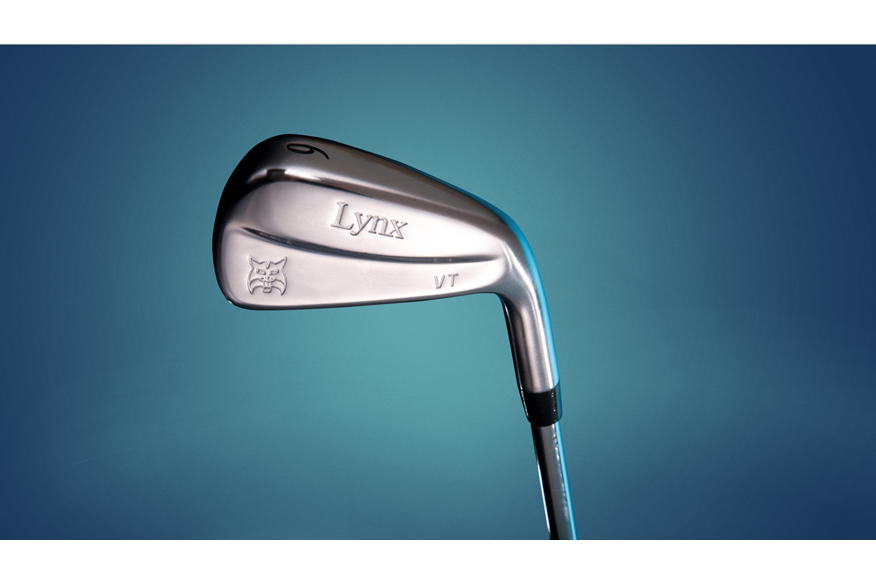
You need to know:
An ultra-modern forged hollow body muscle back iron, which has plenty of internal tech to make the VT friendly on off-centre hits. Lynx say the VT has a variable thickness forged face to deliver ball speeds unexpected in the category. It also flights shots higher for extra playability.
We say:
It took plenty of head scratching and heated discussion before we agreed the VT was worthy of a place within out Top 10 better player irons of 2018. First off lets say the performance was very solid, with ball speeds, backspin and carry distance right on our test average. Our test pro reckoned the VTs looks and shaping were fantastic, and we all liked the concept of a forgiving blade. But we also thought the VT didn’t quite offer quite the same levels of forgiveness as the other hollow body irons on test (TaylorMade P790 and Titleist AP3). It’s probably down to the VT not boasting any high-density tungsten weighting which focuses mass in very specific areas which the other two do.
Verdict:
At a time when good looking hollow head irons are growing rapidly in popularity we wouldn’t be doing our job if we didn’t highlight at £599 the VT are a fantastic option, particularly if you can’t run to £1K for a set from the bigger brands. Think of them as a playable blade and you won’t go far wrong.
Top 10: Game Improvement Irons 2018
Typically game improvement irons have a larger head with more offset (distance from the hosel to the leading edge), which positions the centre of gravity further back. The extra offset and wider sole positions more weight beneath and further back from the ball’s equator to help shots get airborne. A cavity or hollow head positions more mass around the perimeter to improve forgiveness.
Callaway Rogue X Irons – £849 (s) £1049 (g)
| Website | www.callawaygolf.com |
| Availability | 4 – PW, AW, PW, GW, SW |
| Shaft | KBS Max 90 (s), Aldila Synergy 50 (g) |
| 7iron loft & lie | 27deg / 37.5” |
| Forgiveness Rating | 3.5 |
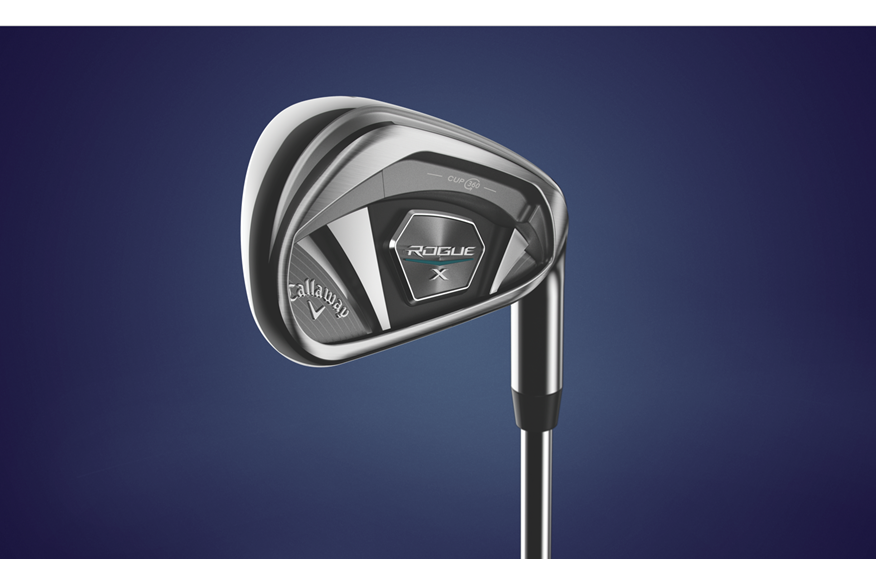
You need to know:
Callaway say Rogue X are an all-out assault on distance. Their lofts are unashamedly strong, the shafts are longer and they’re lighter than the standard Rogue iron. The 7 iron is 27 deg which is only 0.5deg from being a 6 iron in a set of Ping G400s. Callaway say the lighter, stronger, longer trend has spread from Japan, so Rogue X are specifically designed to perform at average and above swing speeds. Callaway insist they’re not for everyone but are essentially aimed at golfers who like and/or want distance, and let’s face it most golfers don’t often have too much of it.
We say:
Callaway reckon Rogue X are an all-out assault on distance, and our data completely supports their claim, we tested it in our longest irons of 2018 test and it proved to be a worthy long distance winner. Plenty will argue the seven-iron (thanks to a strong loft) was almost a six iron, but ‘loft-jacking’ is a game Callaway didn’t start. If you need validation of the X’s credentials in the hands of average golfers, it was the flat out longest iron we hit for all three testers. Even at Simon’s average swing speed Rogue X went 8 yards further than the next longest iron on test.
Verdict:
Our test pro carried Rogue X on average 6 yards further than the next longest iron test (TaylorMade M4). The heads big, butch and chunky, and whilst ball flight was 4 yards lower than the highest iron, it was exactly the same height as the Cobra F8. Suggesting you should hold approaches on a green. Be warned, hit them on a launch monitor against any other iron, and they’re difficult to resist when shots sail past your usual carry distances.
Ping G400 Irons – £110 (s) £120 (g)
| Website | www.ping.com |
| Availability | 4 – LW |
| Shaft | Choice of 7 premium options |
| 7iron loft & lie | 30° loft / 37” length |
| Forgiveness Rating | 3.5 |
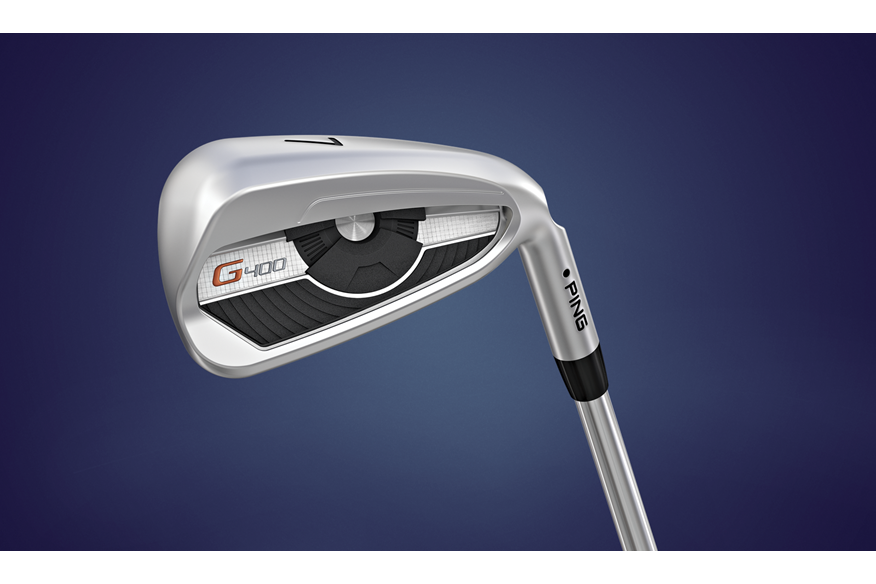
You need to know:
Ping say there’s no point hitting shots further if they don’t fly higher, as they won’t stop on a green. The multi-material G400 has undercut cavities in the sole and top rail to launch shots higher and further. Think hitting a seven iron as far as you’d usually hit a 6 but as high as you hit an 8 iron. There’s also improved forgiveness over the previous G model.
We say:
Ping have always been one of the best options for game improvement irons ever since they introduced the Ping Eye which both tour pros and amateurs loved. Even though the G400 was launched last year, it’s still a brilliant option for 2018. With a seveniron loft 3 degrees weaker than the Rogue X it was never going to be any testers longest iron but we can’t fault it’s fantastic overall speed, distance and forgiveness package. Average swing speed golfers might well see a gain in distance going for the new Ping G700 but make no mistake the G400 are a top performer across the board. Ping irons also hold their value more so than virtually any other brand, worth remembering if you’re the type to chop and change equipment on a regular basis.
Verdict:
Ping have made brilliant game improvement irons for years and the G400 follow in the footsteps of their forbearers. We love how buying each iron individually means you only pay for the clubs you’ll actually use.
Cleveland CBX Irons – £570 (s) £648 (g)
| Website | www.clevelandgolf.com |
| Availability | 4 – AW (stock set 5 – PW) |
| Shaft | True Temper Dynamic Gold DST 98 (s) Miyazaki C Kua |
| 7 iron loft & lie | 30° loft / 37” length |
| Forgiveness Rating | 3.5 |
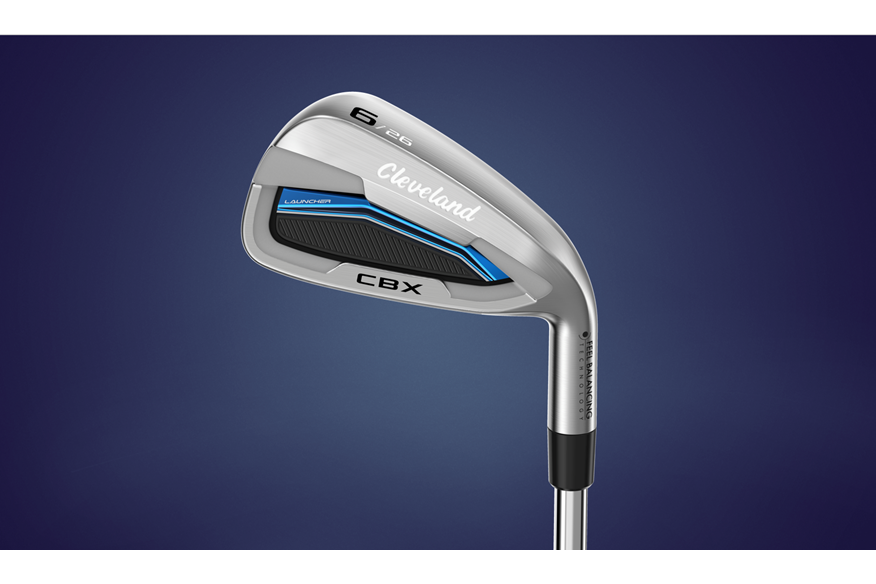
You need to know:
Bringing together everything Cleveland have learnt about wedges over the last few years into a progressive iron design, with fast face tech. Tour zip grooves and laser milling enhance spin for wedge like control. Thicker, lower profile long irons give maximum distance, more compact thinner short irons play and look more like your wedges.
We say:
The CBX has a different look to most of the others irons in the game improvement category, as it’s heads quite deep (to maximise face flex), but it still manages to appear quite compact, which two of our testers really enjoyed. A lot of thoughts gone into the CBX and we love how Cleveland have created a super high spec product. The satin finish looks the business whilst cutting glare, and the face and groove tech alone costs more to create than any other iron we tested. Competing against irons with stronger lofts is always a big ask but the CBX impressed by posting numbers spot on our test average for ball speed, launch and carry distance.
Verdict:
It sounds ridiculous but for less than £600 in the current market the CBX represent excellent value for money (especially considering the premium Dynamic Gold shafts). We reckon they’re well suited to golfers who put a premium on looks, and don’t like overly wide top edges or soles yet still need a decent degree of forgiveness.
Cobra King F8 Irons – £649 (s) £749 (g) (7 clubs)
| Website | www.cobragolf.co.uk |
| Availability | 5 – PW, GW |
| Shaft | True Temper XP 90 (s) Aldila Rogue Pro 65 (g) |
| Forgiveness Rating | 3.5 |
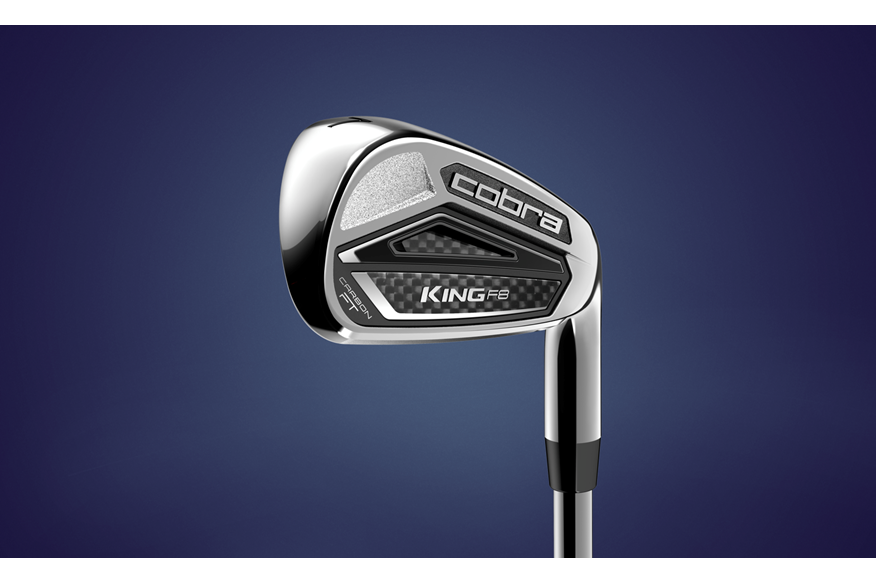
You need to know:
A progressive set construction (TECFLO) means each iron is engineered as an individual for its particular playing conditions. Hollow body long irons, half hollow mid irons, cavity back short irons and blade wedges are teamed with two different steels and groove shapes to improve distance, maximise feel and deliver control. PWRShell faces maximise ball speeds from larger areas of the face, maximising forgiveness and consistency.
We say:
The F8’s won’t be on everyone’s shortlist as a power iron, but our test shows they can more than hold their own in any distance contest. It’s fair to say none of our testers preferred the F8s rounded head shape over the competition, but that’s completely subjective and doesn’t interfere with how the F8 can put in a serious shift when it comes to raw power. Where some game improver irons scream ‘hacker’ from the rooftops, the F8s are much more discrete. Our data shows, as the F8 was just above our test average for ball speed, and carry distance. An excellent option if your game doesn’t need forgiveness at all costs.
Verdict:
There’s huge amounts of tech squeezed into the F8s head. Different body constructions, materials, groove configurations, forged milled faces and the addition of Arccos shot trackers at this price point is brilliant.
Wilson Staff C300 Irons – from £515 (s) £599 (g)
| Website | www.wilson.com |
| Availability | 3 – PW, GW |
| Stock Shaft | KBS Tour 90 (s) Fujikura Speeder Pro 58i (g) |
| 7iron loft & lie | 31deg / 37.50” |
| Forgivness Rating | 3.5 |
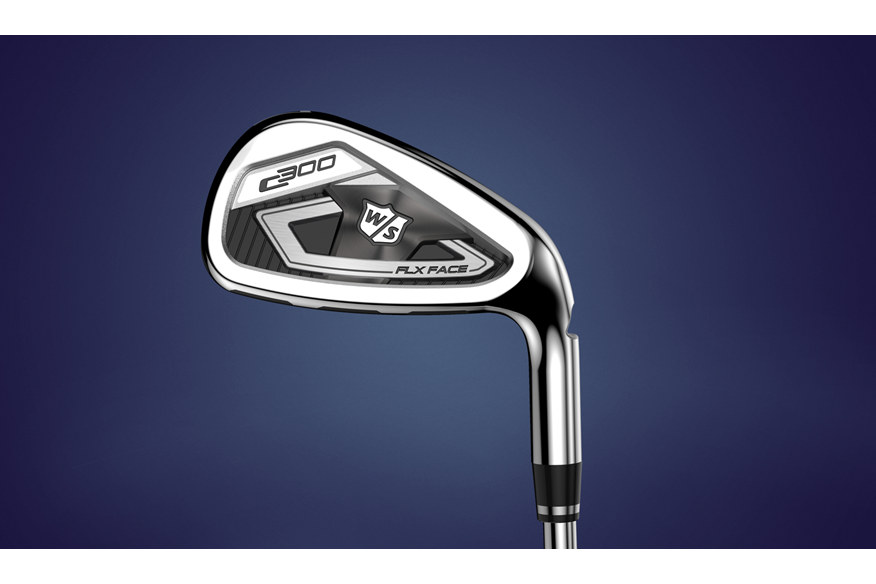
You need to know:
Wilson’s previous C200 irons were the brands first to include power hole tech, and pretty much the first model to actively try and blur the lines between game improvement and better player irons. Their engineers reckon by adding a second row of power holes to the C300s soles they’ve built in 57% more face flex than the original, which equates to 7 yards of extra carry with a 7 iron. Distance isn’t the only gain either, Wilson say toe and heel strikes will be more accurate too.
We say:
We’ve done plenty of testing with fast face irons since they were first introduced and a trend we’ve spotted is how high swing speed players can over power face flex (when it comes to irons). By that we mean the very face flex that helps slingshot an average golfers shots further means shots stay on the face for longer at high swing speeds, robbing shots of power. It goes without saying then our amateurs saw better results with the C300 and in particular Simon. From the C300s weak 31deg loft (compared to the competition) posted his second highest ball speed (tied with 4 others) and a carry distance just six yards back from his longest. Which has to say for club golfers the C300 is a very good option.
Verdict:
The C300s less offset gives a lovely ‘normal’ look at address. Only you can decide if shiny chrome finishes are your thing, but we really liked the C300s head size which we felt would inspire confidence for most golfers. Performance and value for money are superb so we’d have no difficulty slipping a set in our bags for 2018.
Mizuno JPX 900 Forged Irons – £120 per iron
| Website | Golf.mizunoeurope.com |
| Availability | 4 – GW |
| Shafts | Project X LZ 5.5 (s) Project X LZ (g) |
| 7 iron loft & lie | 31deg / 36.75” |
| Forgiveness Rating | 3 |
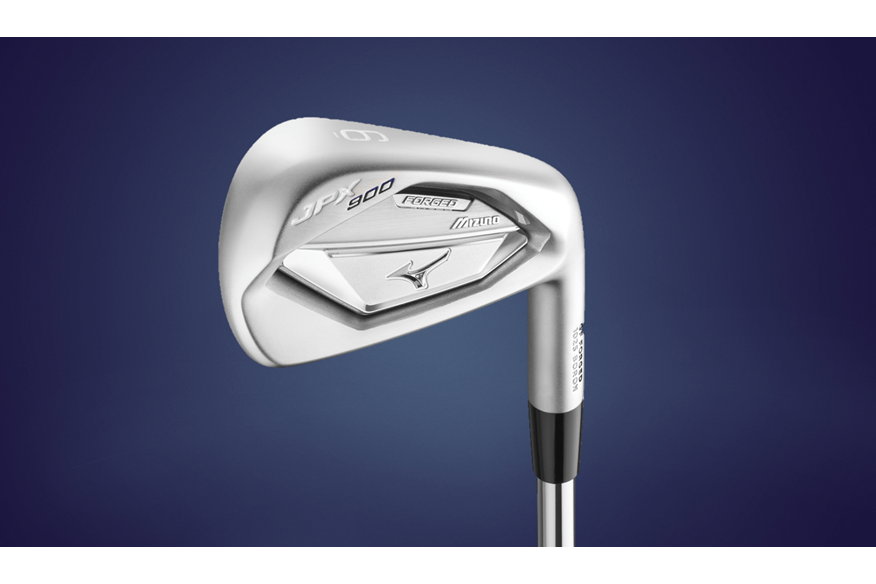
You need to know:
A mid-sized forged iron that ends the trade-off between precision and distance. Small amounts of boron make the Forged 30% stronger so it’s possible to create a pocket cavity with multi-thickness face to allow the 900 to perform like a distance iron without losing feel. Expect the fastest ball speeds ever from a forged iron say Mizuno.
We say:
It could be argued the Forged would be better classified as a Better Player iron, but Mizuno insist because of the addition of boron to the mix and a pocket cavity back it’s an iron that can perform for a wide audience of golfers. The 900’s slightly longer blade length improves MOI, but make no bones about it the top edge is very slender for the category, we reckon means its forgiveness rating is close to the new hollow body (crossover) style irons on the market. The 1025 steel head feels fantastic and the carry distance it produced was just a single yard back from our test pro’s second longest game improvement iron (187 yards). Ball speed was 1 mph slower than our test average, which highlights the challenge designers face getting forged irons to also be quick on off centre hits.
Verdict:
The JPX 900 Forged is a cracking looking set of irons and if you’re looking for a forging that sits between a game improvement and better player model this is a decent option. You’ll need to be a more consistent ball striker to hit them as well as some of our other favourite game improvement models.
Srixon Z 565 Irons – £770
| Website | www.srixon.co.uk |
| Availability | 4-PW (Stock set 4-PW) |
| Shaft | Nippon NS Pro 980 (s) Miyazaki Kaula 8 (g) |
| 7iron loft & lie | 31 deg / 37.00” |
| Forgiveness Rating | 3 |
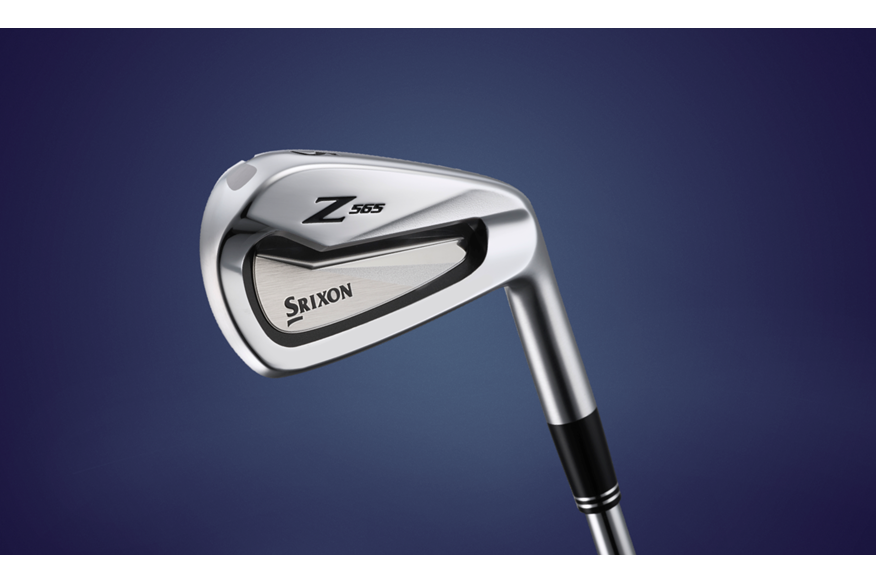
You need to know:
SUP10 spring steel faces are combined with soft 1020 carbon steel bodies for a smooth but energetic feel say Srixon. A Tour VT sole improves turf interaction so less energy is lost at impact and dispersion is improved. Double laser-milled patterns on the clubface create more stable and consistent spin no matter what the lie.
We say:
With a seven iron loft a couple of degrees weaker than the strongest on test it’s absolutely no surprise the 565 struggled to keep up in terms of raw power for our two amateur testers. In the hands of our pro it did however perform very solidly. With more shots hit closer to the centre of the face it posted a right on test average carry distance and above average ball speed. All in the 565 is a great package of face tech, and forgiveness which we reckon has to be on your short list if you’re also looking at the Mizuno JPX 900 Forged in 2018.
Verdict:
Srixon are making some very solid forged irons right now and if your game demands the extra feel and control they can offer then the 565’s are one of less than a handful which can legitimately be called “forgiving”. As with any premium forged iron they’re a serious investment, so if you’re thinking about buying a set we’d always recommend getting fitted for them.
TaylorMade M3 irons – £849 (s) £1049 (g)
| Website | www.taylormadegolf.com |
| Availability | 3 – PW, AW, SW |
| Shaft | True Temper XP 100 (s) Mitsubishi Tensei (g) |
| 7iron loft & lie | 30.5deg / 36.75” |
| Forgiveness Rating | 3 |
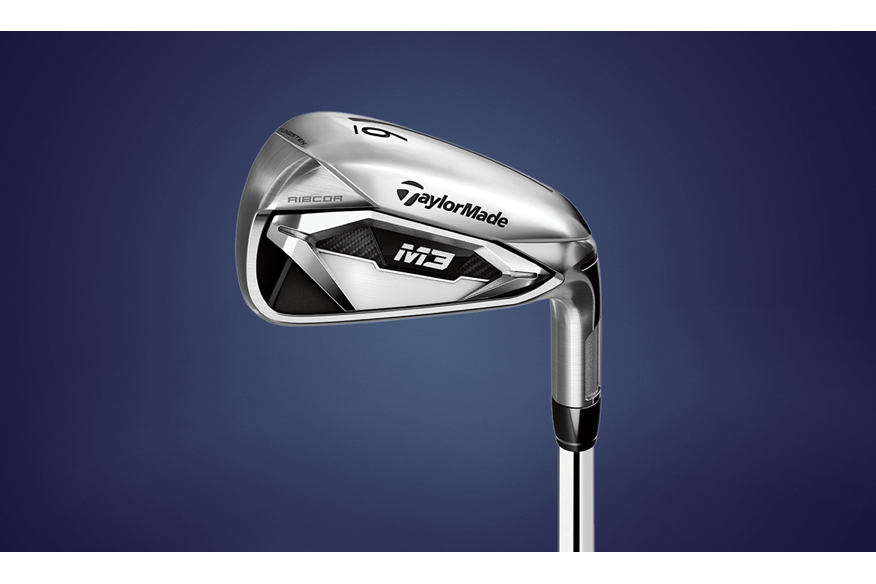
You need to know:
TaylorMade say the M3 is the result of creating a distance iron with a more compact players head shape. They’re for the serious golfer who want a good looking, powerful iron that sounds and feels great. Like the M4, Ribcor tech locally stiffens the face to improve ball speeds. There’s also a 180deg fluted hosel, face slots, speed pocket sole, 360deg undercut top edge and 15 grams of tungsten weight positioned to improve forgiveness of this compact profile.
We say:
In every family there’s an odd aunt or cousin that nobody quite gets or understands, well the M3 is TaylorMade’s odd cousin. As much as we liked the compact head and smaller amount of offset over the M4, there’s no hiding from how performance was restricted thanks to the smaller head and weaker loft. Why is M3 the odd cousin? Well it’s down to TaylorMade having seriously good options in all three iron categories already. We struggle to see where M3 sits and who the target audience really is. In our opinion if you think M3 might suit you, then you really should be looking at the excellent P790 as well. Our testers saw an average 10 yard carry distance drop off moving from M4 to the M3, so there’s some serious gains to be had by going with M4. With the P790 our test pro recorded the same ball speed as M3 (124mph) and but increased carry distance by 2 yards.
Verdict:
Make no mistake the M3 is a lovely looking iron that’s packed to the rafters with ball speed protecting tech. We reckon the compact head is likely to appeal to 12 handicappers and below, which is very nearly the same audience as the P790s. Your ball striking definitely needs to be above average to consider M3s other M4.
TaylorMade M4 Irons – £749 (s) £849 (g)
| Website | www.taylormadegolf.com |
| Availability | 4 – PW, AW, SW, LW |
| Shaft | KBS Max (s) Fujikura Atmos (g) |
| Forgivness Rating | 3.5 |
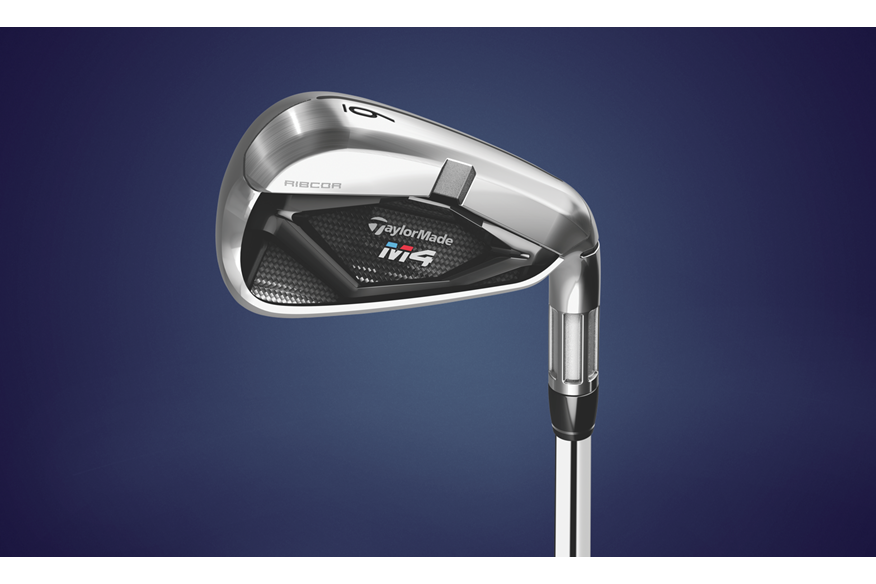
You need to know:
New Ribcor tech behind the face localizes face flexibility which TaylorMade say transfers more energy to the ball, increasing ball speed and distance. A fluted hosel, under cut top edge, speed pocket sole and face slots all help create a super low CG design and highly forgiving iron. A carbon fibre cavity badge dampens unwanted vibrations, improving sound and feel for this category of iron.
We say:
Our recent ‘longest iron of 2018’ test highlighted how Callaway’s Rogue X trumped the M4 for raw power (albeit thanks to a stronger loft) but it’s still a seriously good iron that suits a wide audience of golfers in our opinion. They’re especially good if you’re not a fan of the Rogue’s chunky head profile. Interestingly our test pro generated exactly the same amount of ball speed with the M4 and Rogue X (128 mph) but Rogue went further as they span less. The spin difference wasn’t down to the shafts either, both come as standard with the same new KBS lightweight game improvement MAX model.
Verdict:
No matter how good the M4s face slots and speed pocket sole are a seven-iron loft 1.5deg higher than the Rogue X was always going to struggle to match the Callaway pound for pound in terms of carry distance. Don’t get us wrong M4 is a cracking performance iron and they’ll sell in their droves, even though they aren’t right at the top of the pile for distance like TaylorMade have become accustomed to over the last few years.
Benross Evolution R Irons – £429 (s) £499 (g)
| Website | www.benrossgolf.com |
| Availability | 4 – PW, GW |
| Shaft | KBS Tour 90 |
| 7iron loft & lie | 30deg / 37” |
| Forgiveness rating | 3 |
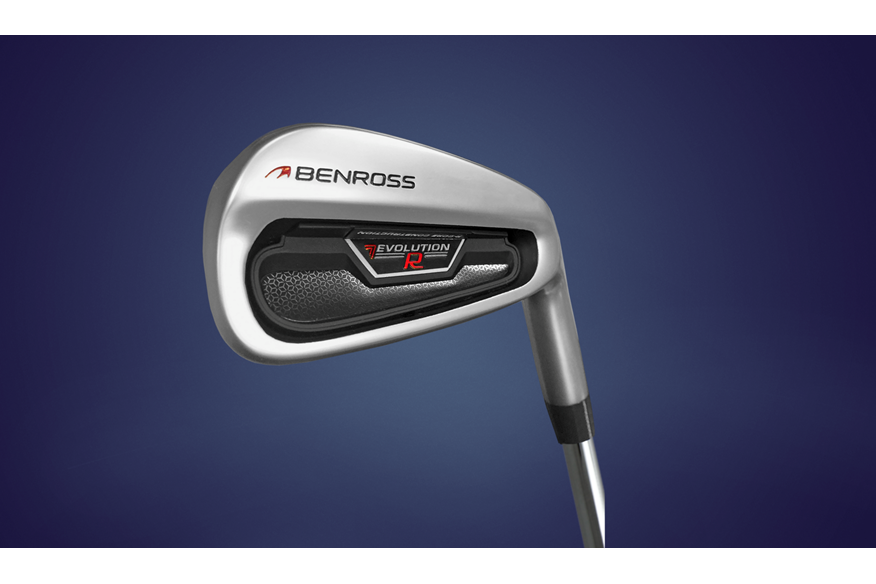
You need to know:
A two-piece head construction has allowed Benross engineers to create a thinner faster face. A polymer insert in the cavity dampens vibration, improving feel and acoustics. Benross say the compact profile produces a true players performance iron.
We say:
The Evolution came as the biggest iron surprise to our test pro. Although at TG we’ve known for years Benross have made excellent value for money irons Ben had never hit one of their clubs. He raved about the small head being just what he likes to see in an iron, especially when it’s backed up by a decent sized cavity back and some fast face tech. It’s got to be said the head is tiny and because it’s got a low profile look we reckon it’s an appearance that will intimidate golfers over a 14 handicap. Unsurprisingly our test pro hit the Evolution very well, recording a ball speed 1mph and carry distance 3 yards down on the test average.
Verdict:
Due to the Evolution’s tiny size we don’t reckon it’s for everyone even though it’s in the game improvement iron category. If you are a reasonably confident and consistent ball striker and on the look-out for a fast and forgiving iron alternative to some of the major players for reasonable money it’s well worth sticking on your shortlist to try.
Top 10: Super Game Improvement Player Irons 2018
Super game improvement irons are often seen as the ugly ducklings, as their designs are never quite as sleek and appealing as other options. But they boast tons of tech to help anyone hit better shots.
In a nutshell, aimed at the golfer looking for ultimate distance and complete forgiveness, without worrying too much about looks or control. They’re particularly well suited to players wanting to make the game as much fun as possible and those wanting extra forgiveness no matter what the trade-off when it comes to feel, sound and appearance.
Cleveland Launcher HB Irons – £570 (s) £648 (g)
| Website | www.clevelandgolf.com |
| Availability | 4 – SW (stock set 5 – PW) |
| Shaft | True Temper Dynamic Gold DST 98 (s) Miyazaki C Kua (g) |
| 7 iron loft and length | 30° loft / 37” length |
| Forgiveness rating | 5 |
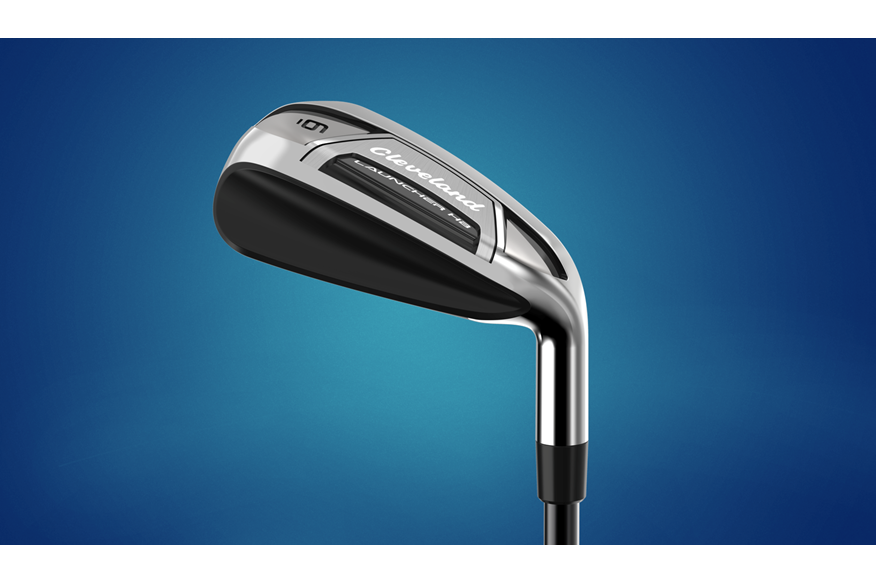
You need to know:
Hybrid forgiveness for a whole set of irons. A hollow-body increases stability to higher levels than cavity back irons which Cleveland say means toe and heel hits fly higher, straighter and longer. A HiBore crown positions mass low and deep, a high-speed face insert flexes at impact to maximise ball speed and internal strengthening ribs improve acoustics over any hybrid iron of the past.
We say:
Flat out the most forgiving iron in the whole of our Top Gear 2018 test schedule. There’s no doubt in our mind hybrid style heads offer extra forgiveness over a traditional irons (hence it’s the only club to receive a forgiveness rating of 5), so we absolutely agree with Cleveland’s performance boast. The stretched long head (from toe to heel) and low and deep weighting contribute to an ultimate forgiveness and consistency recipe. Will the majority of club golfers use a set? Absolutely not, even though we know they’re more forgiving, many won’t be able to see past the hybrid head shape and very wide sole. Our data suggests hybrid style irons even though they’re more forgiving don’t automatically guarantee more carry distance. Anyone buying a set would do well to get an experienced fitter to cast their eye over how the HBs flights shots for them. As Simon saw a gain of 800 rpm in back spin (over his test average) which meant giving up 10 yards of carry distance.
Verdict:
A super forgiving hybrid iron that would help many golfers find more greens in regulation. Experience tells us though small numbers of golfers will actually put a set-in play. Our test pro reckoned lots of 15+ handicappers would hit the Launcher more consistently than a traditional cavity back iron.
TaylorMade M CGB Irons – £849 (s) £1099 (g) for 7 clubs
| Website | www.taylormadegolf.com |
| Availability | 4 – SW |
| Shaft | Nippon NS Pro 840 (s) UST Recoil 460 ES (g) |
| 7 iron loft and length | 29.5° loft / 37” length |
| Forgiveness rating | 4 |
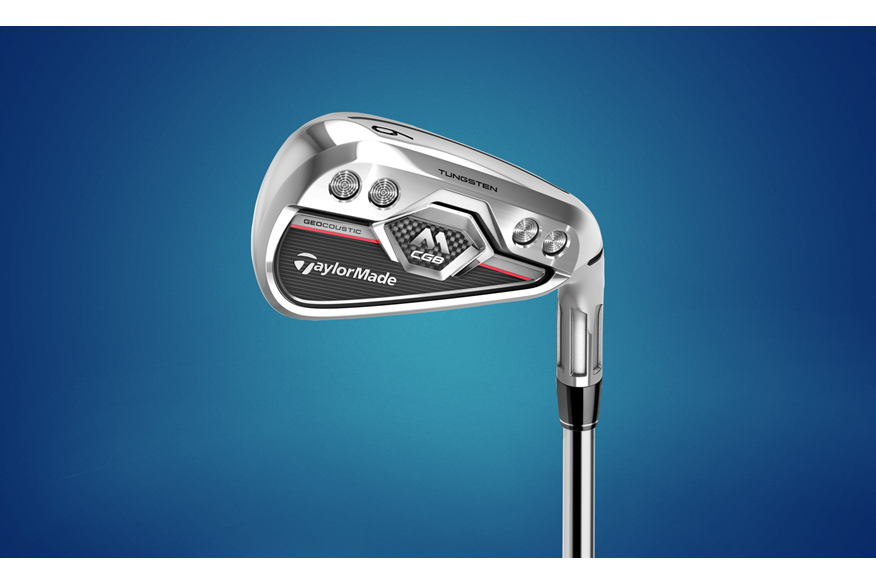
You need to know:
With the same amount of face flex in every iron as a driver the M CGBs are fast, fun and forgiving. An ultra-low CG placement flights shots higher with optimized spin rates to maximise carry distance. Speed pocket and face slot tech is combined with tungsten weighting to create a super forgiving high MOI design, which boasts of extra ball speed and accuracy consistency across the whole club face.
We say:
By posting ball speeds and carry distances within the top three fastest and longest super game improvement irons for each tester it’s got to be said the CGBs have the ability to perform. The heads have plenty of offset, a wide sole and chunky top edge but thanks to a lightweight shaft overall feel is surprisingly lively and friendly, even if two testers didn’t think the face felt quite as flexible or explosive as the Cobra King OS. Thanks to the nicely shaped heads Simon reckoned even though he’s a 10 handicapper he could easily slip a set in the bag. It’s worth remembering the CGB’s have the same amount of face flex as a driver throughout the whole set, which means you’re highly likely to gain a bit of distance with the 8, 9 and PW as these are the clubs usually left without fast face tech.
Verdict:
A decent looking super game improvement iron which can do a job for a wide audience of golfers. Ideally suited to golfers who really want as much distance as they can get their hands on, but don’t quite have the club speed to launch the long and mid irons of a strong lofted set (like the Callaway Rogue X and TaylorMade M4) from the turf.
Cobra F-Max Irons – £449 (s) £699 Combo set (g)
| Website | www.cobragolf.co.uk |
| Availability | 5 – GW (s) #5h + 6-GW Combo set (g) |
| Shaft | True Temper SuperLight (s) Cobra Super Lite 60 |
| 7 iron loft and length | 31.5 °loft / 37.25” length |
| Forgiveness rating | 4 |
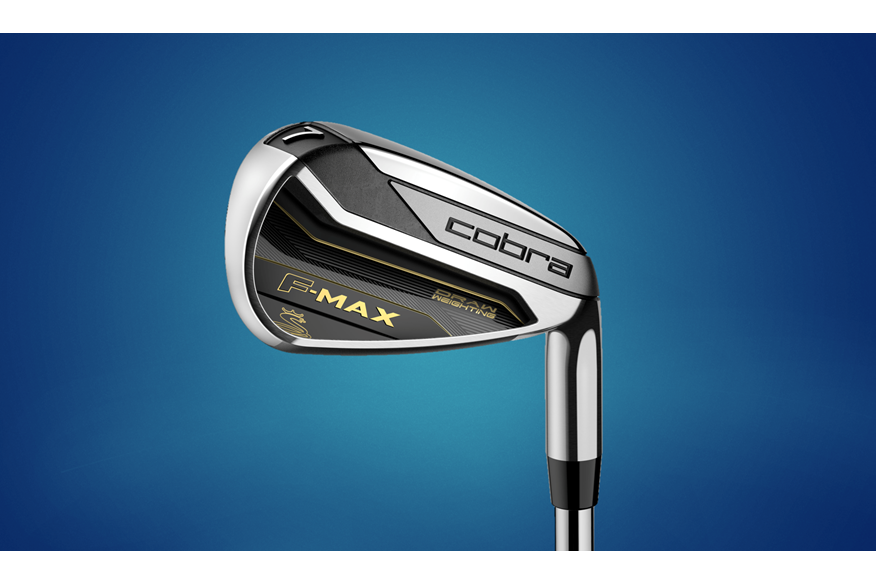
You need to know:
Cobra’s lightest most forgiving iron. Ultralight weight shafts and heads mean the F-Max deliver speed and forgiveness for moderate swing speed golfers. An undercut cavity improves forgiveness, heel bias weighting and offset hosels help square the club face at impact for longer straighter shots.
We say:
The emergence of weaker lofted irons would have been unthinkable just a few years ago but more and more are making an appearance. The idea being that as golfers get older they’re highly likely to lose a bit of club speed, so brands give a little extra help by using lighter shafts and extra loft. First off lets say we’re big fans of the concept, reckoning there’s a creditable place within any modern brands range for a set up aimed specifically at slower swing speeds, particularly as it’s now a growing market. Our testers who aren’t within the target audience gained some serious extra backspin which robbed shots of distance, but it doesn’t mean the F-Max aren’t a great option for the target senior golfer. We particularly like the idea of a combo set with #5 hybrid, which will work well at the sorts of swing speeds you’ll need to maximise carry distance with the F-Max.
Verdict:
Like Cobra’s game improvement F8 irons the F-Max have very rounded heads compared to the competition, but looks are personal, so while we weren’t huge fans there’s every chance you might love them. The all-important question is how do you know if you need F-Max? Well for those that do, you’ve probably already noticed irons don’t go as far as they used to. Maybe you struggle to launch a 5 iron from the turf and you’ll probably swing a 7 iron less than 75 mph (club speed). F-Max are an excellent blend of value for money and forgiveness performance for the right swing speed player.
Callaway Rogue W Irons – £1049 (g)
| Website | www.callawaygolf.com |
| Availability | 4 – SW |
| Shaft |
Aldila Quaranta (g) |
| 7 iron loft and length | 31.5deg / 37” |
| Forgiveness rating | 4 |
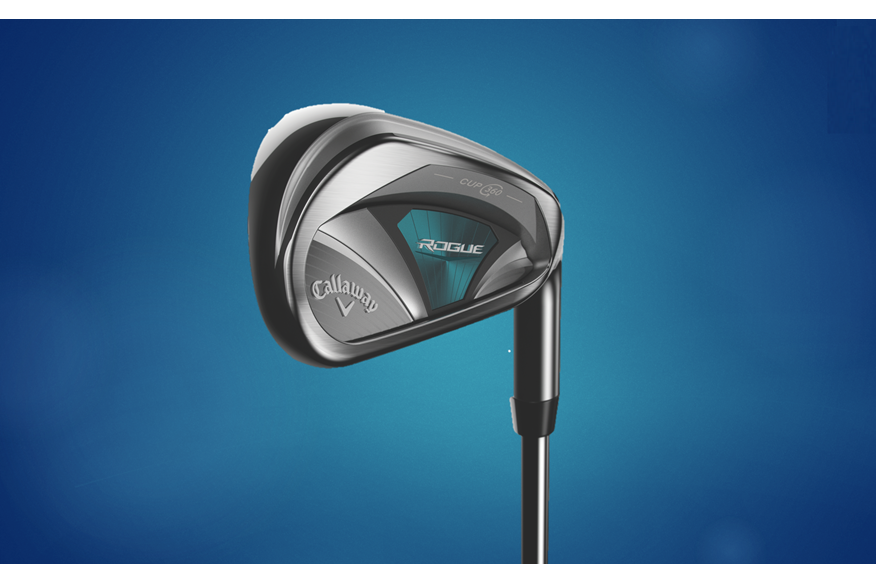
You need to know:
Specifically designed for golfers with slower swing speeds. All the same fast face tech, standing wave and urethane microsphere additions you’ll find in Callaway’s other 2018 Rogue irons but with more loft and lighter swingweights. Rogue W are designed to launch higher, maximise air time and carry distance for golfers who’s swing speeds don’t hit the red line.
We say:
It’s not fair how we don’t all own enough swing speed to launch the super strong lofted Rogue X irons from the turf. But if you don’t, we reckon Rogue W are well worth a closer look, as just like the Cobra F-Max they’re specifically set up to boost launch angle and airtime at average speeds. Simon hit the W really consistently, liking the head shape (for the SGI category) and feel, but just like we expected even at average swing speeds the Rogue W racked up an extra 2000rpm of backspin which it wouldn’t do at lesser swing speeds. The extra spin made it difficult for the Rogue W to compete when it came to dishing out longest distance or fastest ball speed awards from our testers, but in the right slower swing speed hands it would be a revelation.
Verdict:
Just like the Cobra F-Max, Rogue W are designed for a very specific golfer. If you fit within their target bracket and see gains in ball speeds and carry distances by going lighter, and more lofted you’d be foolish to not run with the idea. It goes without saying an experienced fitter would guide you down the right route for your game.
Ping G700 Irons – £149 (s) £159 (g) per club
| Website | www.ping.com |
| Availability | 4 –PW, UW, SW |
| Shaft | Choose from 10 premium options |
| 7 iron loft and length | 29.5 deg/ 37” |
| Forgiveness rating | 4 |
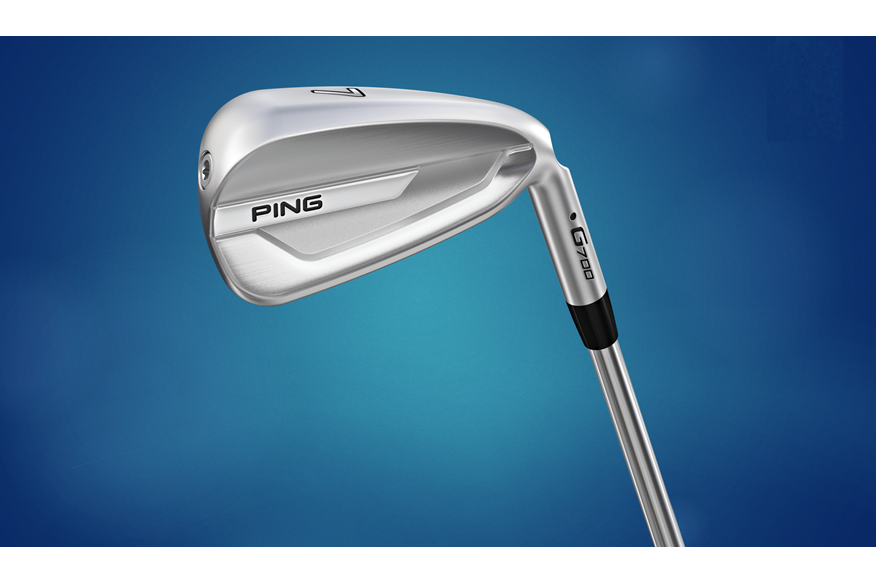
You need to know:
Ping’s longest, highest flying iron ever. A new machined C300 steel face generates twice the face flex as the usual 431 stainless steel. Low and extreme heel-toe weighting boosts resistance to twisting (forgiveness), protecting ball speed and distance. Sole widths, bounce and offset are all similar to the G400. Expect improved turf interaction, without sacrificing playability or shot height, for this style of iron, which is crucial to stopping shots on a green.
We say:
Where most hollow body irons have attempted to blur the lines between better player and game improvement iron categories, the G700 blurs the line between game improvement and SGI iron models. Or as our pro put it…it’s a hackers blade. For our test pro G700 was his longest carrying SGI iron (180 yards tied with the Mizuno JPX 900 Hot Metal) while for Simon it was 4 yards back from his longest even though it generated his joint highest ball speeds (tied with the Wilson D300 and TaylorMade M CGB). The G700s oversized head, large amount of offset, big chunky sole and lack of a cavity badge are all typically Ping, but we applaud them for coming at hollow head tech from a very different angle to the competition.
Verdict:
Everything about the G700 is slightly bigger than the massively popular G400, including the price tag. At £39 a club more (that’s £273 extra for a seven-piece set) than the G400 it’s the price which is highly likely to be the deciding factor between whether golfers go G400 or G700. Whichever you choose both are a great option, our data suggests so long as you’re not put off by oversized heads the G700s are a fraction more powerful, making them an excellent all-round choice for 2018.
Titleist 718 AP1 Irons – £115 (s) £140 (g)
| Website | www.titleist.co.uk |
| Availability | 4 – GW |
| Shaft | True Temper AMT Red (s) Mitsubishi Tensei Pro Red (g) |
| 7 iron loft and length | 30deg / 37” |
| Forgiveness rating | 4 |
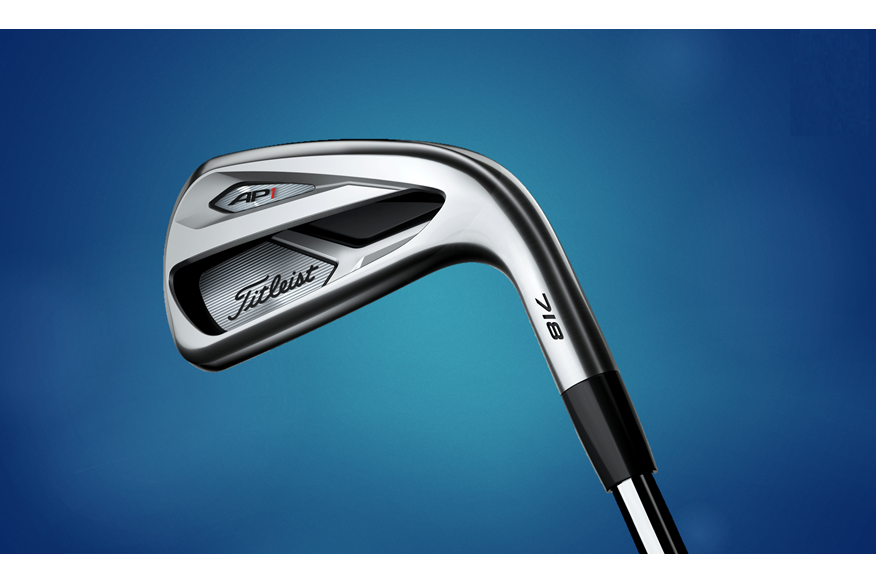
You need to know:
Maximum distance and forgiveness say Titleist. Launch it high and land it soft, so shots hold the green, and finish closer to the flag, plus you get excellent playability. Hollow bodies in the long irons (4 – 5), undercut cavity backs in the rest of the set (6 – GW) and plenty of tungsten weighting maximise forgiveness on off-centre hits.
We say:
Titleist aren’t the first name to spring to mind when thinking super game improvement irons, but we reckon the AP1s are a great good shout for 2018. Yes the heads are bigger than the AP2s but they’re also a very ‘normal’ shape with a high toe, low heel blade profile, which many irons in the category can’t quite compete with. Titleist never like talking numbers but the AP1 performed beautifully, registering our test pro’s fastest ball speed (125mph) and a carry distance within 2 yards of his longest iron. Simon was also a big fan, and we love how not only can you get a proper full on fitting and look at how hybrids and wedges fit at both ends of your set but also how each iron can be bought as an individual so you only need buy what you actually use.
Verdict:
A brilliant option for golfers not really wanting the looks of a full super game improvement model but whose game still needs decent levels of forgiveness and playability. A very solid all-round performer.
Mizuno JPX 900 Hot Metal Irons – £105 per iron
| Website | Golf.mizunoeurope.com |
| Availability | 4 –LW |
| Stock shaft | Modus Tour 105 (s) Project X LZ (g) |
| 7 iron loft and length | 31deg / 36.75” |
| Forgiveness rating | 4 |
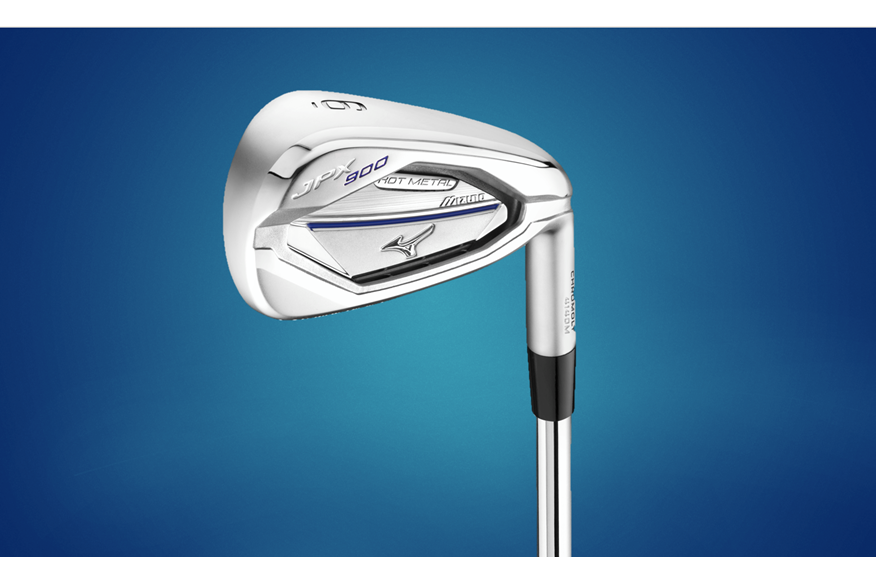
You need to know:
Mizuno use 4140M Chromoly steel and a 360 Cup Face to bring specific ball speed enhancing properties to the cast JPX Hot Metal. They reckon its allowed them to create their thinnest club face ever for extra pop and ball speed no matter where you impact shots on the club face. A power frame chassis ensures excellent feel and maximum energy transfer to the golf ball.
We say:
There aren’t many iron designs that can boast of ultimate forgiveness and manage to marry it with an appealing head shape that masses of golfers want to play with. But the JPX 900 is one of the very few that manage to pull off that particular magic trick. It’s head really doesn’t look like a super game improvement model sat behind the ball, its slick blend of satin finish and generous head size are just what lots of club golfers enjoy. Don’t just think the 900’s are all show and no blow either as there’s plenty of power under the bonnet too. From a 7 iron loft 1.5deg weaker than most, the JPX posted our test pro’s longest carrying shots (180 yards, tied with the Ping G700), along with his second fastest ball speeds (124 tied with the Ping G700 and TaylorMade M CGB).
Verdict:
Our test pro was the JPXs biggest fan reckoning it was amongst his favourite three SGI irons of the year. We love how just like every other Mizuno iron, you buy them individually, and get a huge selection of premium shafts to choose from at absolutely no extra cost.
Cobra King Oversize Irons – £699 (s) £799 (g)
| Website | www.cobragolf.co.uk |
| Availability | 4 – PW, GW, SW (Stock set 4 – PW or 5 – SW) |
| shaft | True Temper XP 85 (s) UST Recoil 460 ES (g) |
| 7 iron loft and length | 30deg / 37.50” |
| Forgiveness rating | 4 |
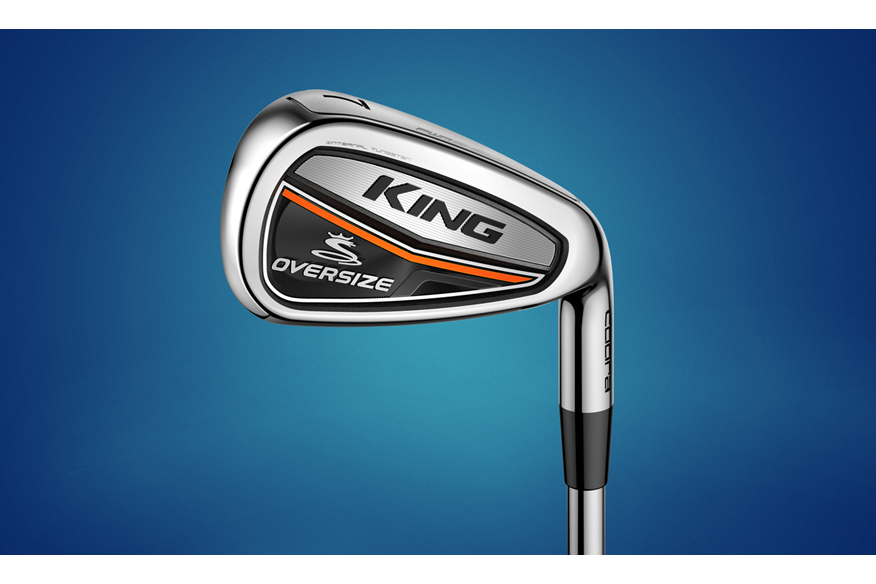
You need to know:
The King Oversize is 12% bigger than Cobra’s F8 game improvement iron, so Cobra say it’s their largest and most forgiving distance iron. A PWRShell face has springiness very close to the legal driver limit and because its welded on the top edge and sole more of the face is capable of delivering higher ball speeds to increase forgiveness. Between 50g and 70g of tungsten is used to centre the CG in each iron, which helps maximise MOI.
We say:
If you haven’t noticed the most forgiving irons nowadays are made much more like hybrids. Hollow bodies are proven forgiveness performers as they preserve ball speed no matter where you impact shots on the club face. If we gave out awards for the biggest butchest head the Oversize would definitely be our winner, it’s literally huge. Our testers thought the King felt explosive off the face, and flighted shots really easily. For Simon they posted his longest carry distance (150 yards avearge) of the SGI category. With ball speeds and carry distances just 2mph down and 1 yard short of our test pro’s longest, they’re well equipped to perform in many golfers hands. The only fly we see in the ointment is the head size and the distracting golf ball shaped pattern in the face grooves (which some golfers will feel gives a good impression of where to impact shots) meaning they didn’t quite feature amongst our testers favourites.
Verdict:
The Oversize are a real hark back to the original King Cobra Oversize irons so we reckon if you liked those there’s a pretty good chance you’ll look favourably on the King’s too. They’re very easy to launch which is partly down to the excellent True Temper XP shaft, they’re powerful and thanks to the size there’s excellent off-centre forgiveness too.
Wilson Staff D300 Irons – £579 (s) £659 (g)
| Website | www.wilson.com |
| Availability | 4 – SW |
| Shaft | KBS Tour 80 (s) Matrix Speed Rulz A-Type (g) |
| 7 iron loft and length: | 29.5deg / 37.50” |
| Forgiveness rating: | 4 |
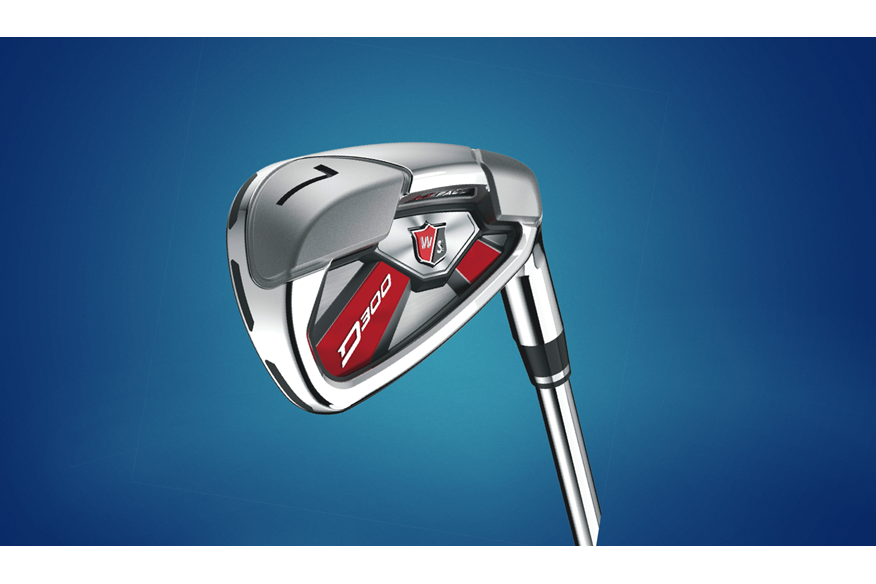
You need to know:
Wilson’s FLX Face tech means just 26% of the face touches the head which Wilson say improves face deflection by 16% over the previous D200 model. More face flex equals more ball speed and with so much of the face deflecting you can expect high ball speeds wherever shots impact the face. 60g is positioned in toe and heel weight pads to maximise forgiveness and playability.
We say:
Not many golfers will pick the D300’s from a club rack and fall head over heels for its head shape. But we promise the D300’s beauty unlike a supermodel lies in its performance not its looks. It’s certainly not a criticism when we say the heads a typical super game improvement design, and as such it struggles to score highly in both the forgiveness and looks camp. But what we do know is the D300 turned in a seriously strong performance for both amateur testers. Simon was the biggest fan posting his second longest carry distance and joint fastest ball speed (tied with the TaylorMade M CGB and Ping G700) with the D300 in his hands. The D300’s have a natural ability to produce speed (which is partly down to the excellent lightweight KBS Tour 80 shaft) and distance, but its strength in preserving ball speeds on off centre hits is also second to none.
Verdict:
If you’re looking for a new set of irons in 2018 and ideally want ultimate forgiveness, excellent distance and decent value for money the D300 should be on your shortlist. Get over the long, shiny head shape and the FLX Face tech and tons of toe and heel weighting come into their own.
Benross HTX Compressor Irons – £350 (s) £420 (g)
| Website | www.benrossgolf.com |
| Availability | 4 – SW |
| Shaft | KBS Tour 90 (s) Kuro Kage Black (g) |
| 7iron loft & lie | 30.5deg / 37” |
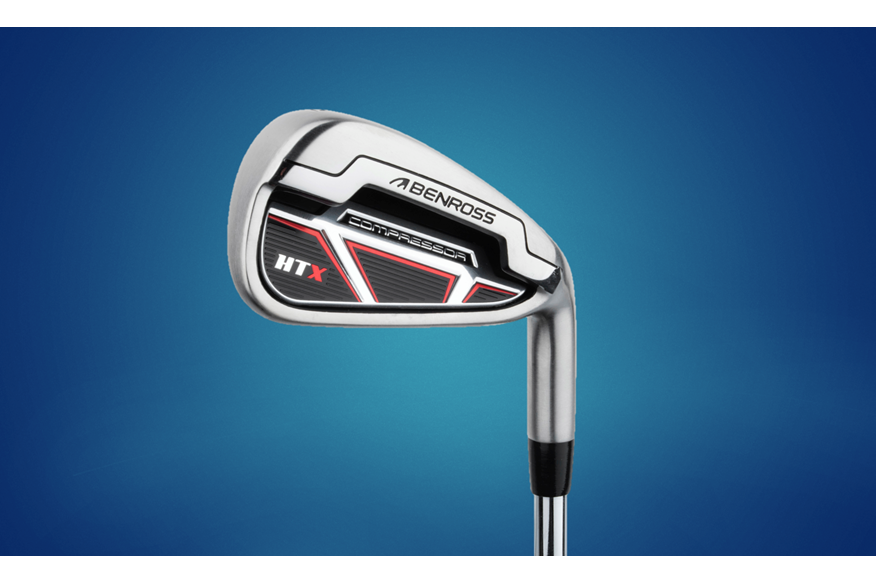
You need to know:
A heat-treated face is teamed with a compression cavity in the sole to minimise ball speed drop off on off-centre hits. Toe and heel weighting maximise head stability improving MOI performance and promoting extreme forgiveness.
Our verdict:
Its’ been said a million times before, you only get what you pay for, which supposedly implies lower quality products cost less. For us in golf lower price doesn’t necessarily mean lower quality but it does however mean you often get less tech. Compare the HTX to the new Benross Evolution R and there’s no fast face tech which at least accounts for some of the price difference (on a steel shafted set at RRP). The HTX has an exaggerated low heel-high toe appearance which wasn’t a massive hit with any tester, but of all the SGI irons we tested it also had the sleekest top edge, which is a bit of a strange combination at this end of the market. Compared to the tech laden competition the HTX posted a carry distance 6 yards short and 3mph (ball speed) slower than the test average.
Bottom line:
There’s not huge amounts of obvious tech like some of the more expensive models but the HTX can just about hold its own. We couldn’t all quite agree we loved the head shape but that’s personal, we did however like the solid performance and obvious cost saving.
